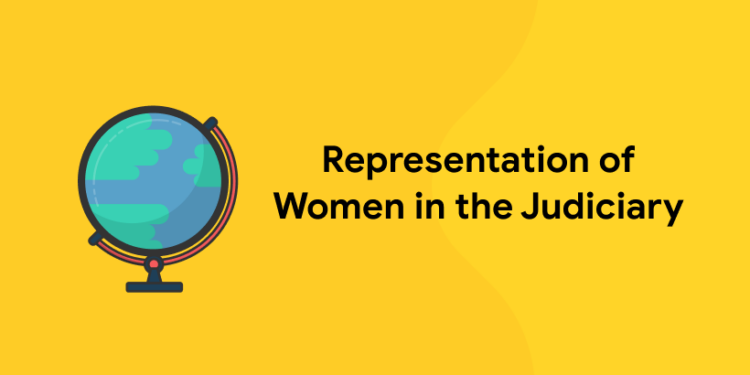Table of Contents
As engagement of women population in public life increases but still their presence in the judicial system are underrated with smaller percentage within a significant subgroup than holds in the general population. Women’s representation in the judiciary legal system is key to ensuring that courts represent their citizens, address their concerns and considering relevant goals and objectives. By their mere presence, women judges enhance the legitimacy of courts, sending a powerful signal that they are open and accessible to those who seek legal authority to justice. The entry of women judges into legal system from which they had historically been excluded has been a positive step in the direction of judiciaries being perceived as being more transparent, inclusive, and representative of the people whose lives they affect.
Historically Gender equality has been uneven, steps are being taken to countermeasure this as evidenced by the declaration by the United Nations General Assembly marks 10th March as the International Day of Women Judges. The General Assembly resolution, drafted by the State of Qatar, is tangible proof of a positive shift.
In recent years the number of young women graduating from law schools has increased immensely. Nevertheless, the engorgement of the judiciary is still low .The representation of women in the judicial legal system is significant for many reasons. In addition to ensuring that the legal system is developed with all of society in mind, it also inspires the next generation of female judges and motivates them to achieve their goals.
Attempt Free GK Mock Test ! Download The Entri App
Importance Of Women In The Judicial System
As per the Highlights from the 2013 Geneva Forum on Women in the Judiciary system, Participants drew on personal opinions, their professional experiences and their legal skills in discussing the obstacles that continue to block women’s full and equal participation in the Judiciary ,the important roles that women judges can play, and
the mechanisms to improve women’s representation. Participants emphasized the importance of judicial
independence, impartiality and integrity. They stressed that the composition of the judiciary must reflect the composition of society if it is to be perceived as legitimate and capable of giving equal justice and upholding equality before the law. They underlined the importance of judicial diversity and of ensuring women’s full and equal participation in the judiciary. It was noted that States are obliged under international law to guarantee women’s ability, in law and practice, to participate fully in the Judiciary system.
Some participants expressed the opinion that women judge differently than men and are more likely to advance the legal protection of women’s human rights. They highlighted examples of how women judges in some jurisdictions had played an important role in addressing discrimination against women and violations of women’s human rights.
Significance Of High Women Representation In Judicial System
- Presence of Women in the Judicial system motivates more Women to seek Justice.
- Higher numbers, and greater visibility, of women judges can increase the willingness of women to seek justice and enforce their rights through the courts.
- Have different point of views because of their life experience.
- Diversity on the bench would definitely bring in alternative and inclusive perspectives to statutory interpretations. This can improve justice sector responses to the needs of women and marginalized groups.
Status Of Women In Judicial System
1: Who was the first woman President of India?
In recent decades, the number of women in the judicial System has significantly increased worldwide. In many countries around half of law students are women, and 2014 data shows that women in OECD countries make up more than 54% of professional judges. But women are still vastly underrated in top-ranking judicial positions including on High Court benches and other senior roles in the legal profession.
Women only hold 33.6% of judgeships in Supreme Courts. This trend is mirrored in the proportion of presidential positions women occupy. On average, women hold 45.9% of presidencies in courts of lower courts, 28% in courts of appeal, and 18.6% in high courts. Since women are often successful at gaining entry into the legal profession but progress slowly into senior posts, re-visiting the corporate culture and working conditions, and introducing mentorship schemes are necessary considerations. Regardless of government policies, leadership and independent monitoring of outcomes are essential components to ensure a more diverse judiciary.
Grab Latest GK Related Study Materials – Register Here
Free UPSKILLING Courses!
Take your first step toward mastering in-demand skills, acing interviews, and securing top-tier jobs with Entri's free upskilling courses.
Start Learning!How Does Gender Play A Role In The Justice System?
Gender-based discrimination in the criminal justice system creates significant obstacles to achieve access to justice for all. This problem disproportionately affects women, who face still face significant barriers in accessing justice, whether they are victims, witnesses, alleged offenders or prisoners.
Women’s Representation In The Highest Court
The presence of women justices in the highest constitutional courts varies significantly across countries, yet there is little existing research that engages this substantial cross-national variation. Women are represented in the judiciary, but at a much lower rate than men. About a third of judicial positions are held up by women. Historically, only 4% of Supreme Court Justices have been women. More women are now working in the judicial system than ever before, though they are still outnumbered by men.
In India women judges constitutes of 11.5% in High courts and in the Supreme court there are only four women judges out of the sitting 33.Out of 1.7 million advocates, only 15% are women. Only 2% of the elected representatives in the State Bar Councils are women. The Supreme Court has the highest ever number of women judges serving now.
Women’s are discouraged from entering the legal profession due to the following reasons:
- Clients preference for male advocates.
- Uncomfortable environment within courtrooms.
- Lack of infrastructure.
- Crowded courtrooms.
- Lack of washrooms etc…
Attempt Free GK Mock Test ! Download The Entri App
The Role of Women Judges and a Gender Perspective In Judicial System
Achieving equality for women judges, in terms of representation at all levels of the judiciary and on policy-making judicial councils, should be our goal- not only because it is right for women, but also because it is right for the achievement of a more just rule of law. Women judges are strengthening the judiciary and helping to gain the public’s trust. The entry of women judges into spaces from which they had historically been excluded has been a positive step in the direction of judiciaries being perceived as being more transparent, inclusive, and representative of the people whose lives they affect. By their mere presence, women judges enhance the legitimacy of courts, sending a powerful signal that they are open and accessible to those who seek recourse to justice. However Women judges bring those lived experiences to their judicial actions, experiences that tend toward a more comprehensive and empathetic perspective- one that encompasses not only the legal basis for judicial action, but also awareness of consequences on the people affected.
Free UPSKILLING Courses!
Take your first step toward mastering in-demand skills, acing interviews, and securing top-tier jobs with Entri's free upskilling courses.
Start Learning!Gender Equality In Judiciary
Ensuring gender balance in judicial leadership has been increasingly highlighted by OECD countries as a key governance issue related to fairness, transparency and the effectiveness of rule of law (OECD, 2019). A diverse judicial workforce can bring different voices and perspectives to the bench. Such diversity and gender balance can also strengthen the integrity of the judiciary, promoting citizen’s trust in justice services. Greater participation of women in judicial professions, particularly at senior levels, can also help to reduce gender stereotypes and increase women’s willingness to enforce their rights.
As of 2018, women made up 61% of the judiciary in the OECD-EU countries, ranging from 81% in Latvia to 33% in the United Kingdom. Overall, in most OECD countries, gender representation across the judiciary has remained fairly constant or has marginally increased compared to 2016. On average during this period the share of women judges increased by 2 p.p. The greatest increase in the share of women judges was recorded in Turkey (5 p.p.) but there were marginal declines of 1 p.p. in Iceland and Israel. When comparing gender balance among judges, it is important to consider the unique features of national legal systems and professional development patterns. For example, differences exist between the civil law system and the common law system: in the former, women can be recruited directly from law schools before they face possible career disruptions, while in the latter, women face a statutory requirement for at least five or seven years post-qualification experience for legally qualified posts in the judiciary.
More women are now working in the judicial system than ever before, though they are still outclassed by men. Important decisions about social, legal, and financial practices are made in these jobs. Having more women serve in these roles helps to build the inclusivity, fairness, transparency, and representation of the people that the judicial system stands for. The intrusion of women currently in law school may signal that a more fair representation of women in the judiciary is on the way. This broader representation should also extend to nonbinary and gender-fluid individuals, both in law school and on the bench.













